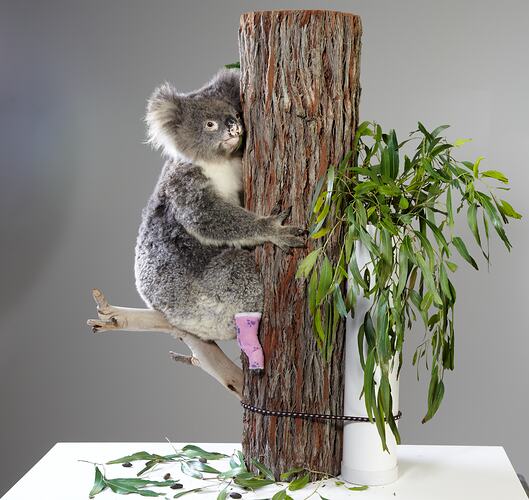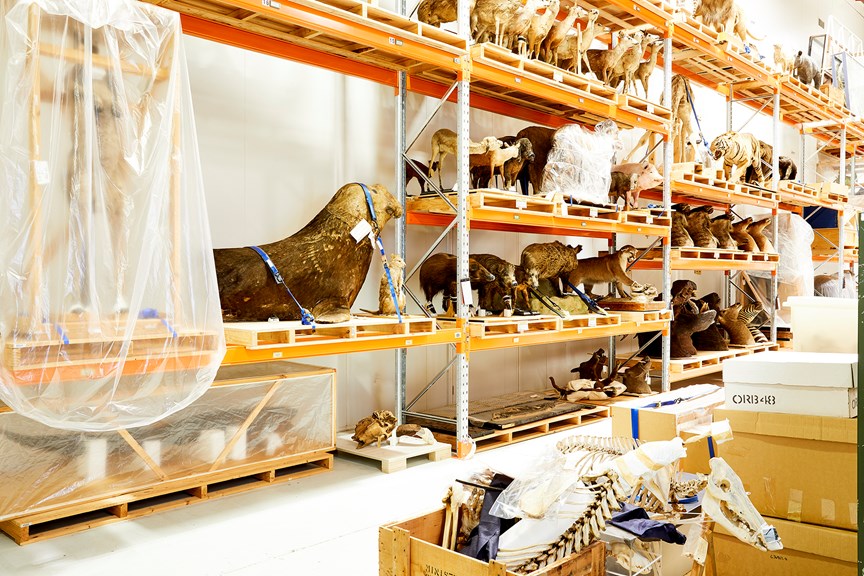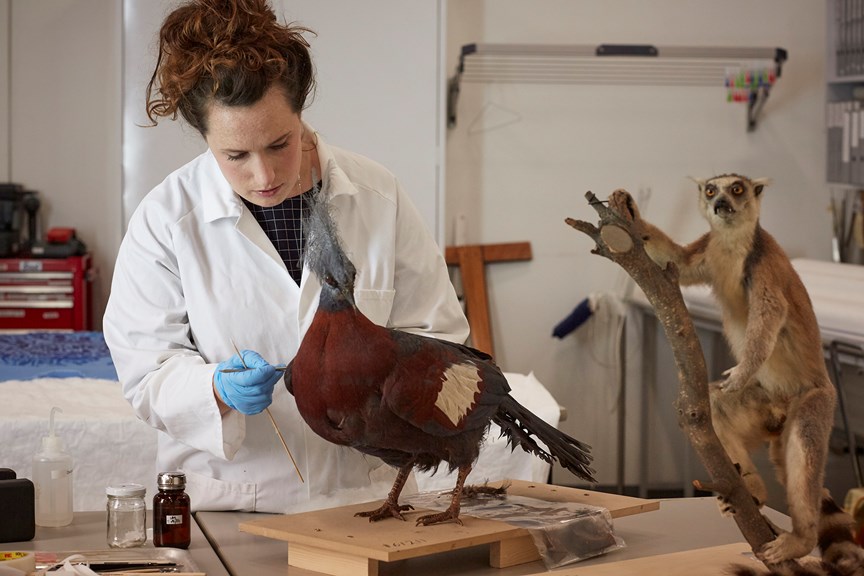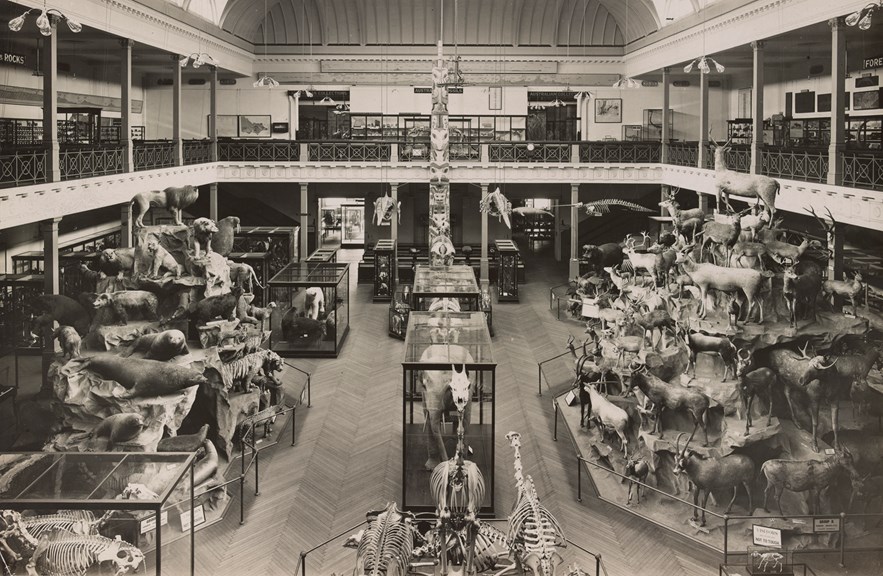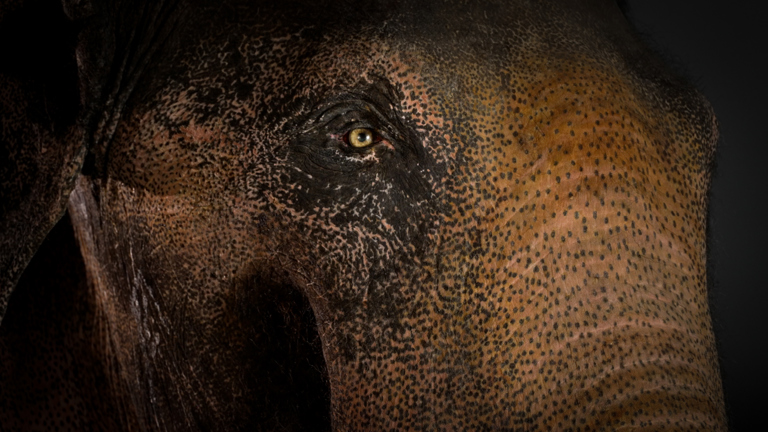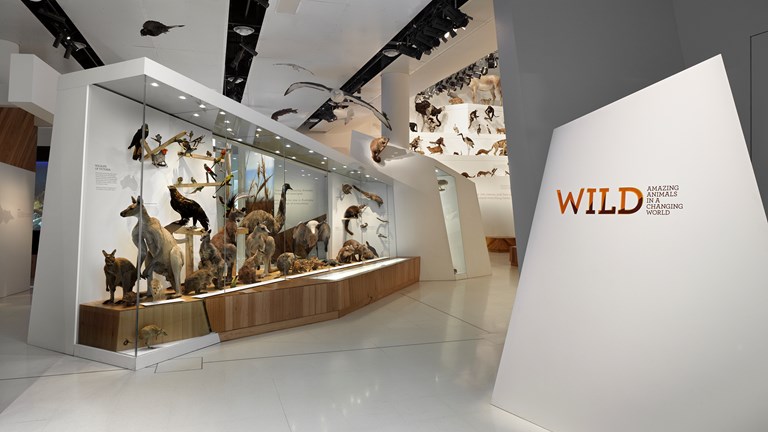
Wild goodbyes
We've been blown away by the number of people who have reached out to us about Wild—here are some answers to your most often asked questions.
One of Victoria’s most beloved exhibitions has come to an end. While it’s for some very good reasons (and is making way for something really exciting), we understand many people are going to miss that wonderful and diverse zoological display.
Wild has been home to more than 1000 specimens since it opened in 2009. The gallery has hosted everything from this nearly 200 year old charismatic crocodile—one of the very first specimens to come into the museum's collection—to some of our more recent acquisitions like the iconic koala, Sam.
Why do you have to take Wild down? We love it!
We know, and we loved it too. Unfortunately, the conditions that make it safe and comfortable for the public to view these irreplaceable specimens are very different to the conditions needed to keep them for as long as possible.
Our collection stores are kept at a very stable humidity level and quite cool—generally around 18°C. Light levels in the stores are also kept very low, except when people are working in there. Access is managed, and the rooms are sealed as often as possible to maintain these stable conditions—these objects don’t react well to change.
A gallery like Wild has to accomodate large groups of people—that means wide open doors, well-lit spaces and easy access. People generally like the temperature to be a little warmer than 18°C, and they bring in their own fluctuating humidity levels any time they breathe, sweat, or come in from the rain! Sadly, just putting a specimen in an enclosed case doesn’t prevent all of this potential damage.
Those same conditions that make it easy, accessible and safe for humans to visit, also make it inviting for pests. Many of the specimens from Wild have being treated for carpet beetle and clothes moth infestations over the course of the exhibition. Far from being dusty or damp, our storage facilities are actually ideal spaces for these precious specimens to rest between doing the public parts of their job.
What happens to those specimens now they’re being taken away—you’re keeping them, aren't you?
Of course we're keeping them! We would never throw them away. These are all important specimens in the museum's scientific State Collections for Victoria, and are just a small number of all the specimens lodged here. These collections are critical for the physical documentation and recording of the natural heritage of the Earth. We are just one of many similar scientific collections found in museums worldwide contributing to our understanding of the natural world.
You might think that being stored means the specimens are inert, or not in use, but being on display is just one of their jobs. These specimens play a vital scientific role because each of them illustrates a moment in time that can be studied in the future. Specimens are accessed by researchers both at the museum and elsewhere, for all sorts of reasons! Everything about them—fur, feathers, scales or skin, measurements, colour, age or condition—tells us a story about what the world, in that place and time, was like for that animal. This data is becoming more precious as we negotiate this period of environmental upheaval, caused by climate change and urbanisation.
Many of the specimens that were on display in Wild have been at the museum a very long time, many are well over 100 years old! Some have been on display in the past and some will go on to be included in the exhibitions of the future. Time off display, however, is critical to make sure we still have these specimens in the years to come.
Can I buy a specimen, or two, please?
…No. These specimens belong to everyone—it is why we have such a responsibility to protect them. But we do appreciate your enthusiasm for our animal mounts. It’s enough to make even Sad Otter smile!
However, you can buy your very own Sad Otter plush here.
How can I access these specimens now that the Wild exhibition has finished?
Great question. Whether you’re a researcher or an interested member of the public, seeing these specimens (and having access to their associated data) is for everyone. If you missed the experience of visiting the gallery itself, we have created a virtual tour of Wild.
Every one of the specimens featured in Wild also has its very own page on Museums Victoria Collections—our online collections catalogue. You'll still be able to share in these specimens—including the thylacine or regent honeyeater. You can also explore Victorian animals that were part of this exhibition.
While many of the specimens that were on display in Wild have returned to safe storage, we still make good use of taxidermy in our other exhibitions. Displaying taxidermy collections has always been an important part of what we do here at the museum—from the early days of McCoy Hall's extraordinary menagerie—and it's something we will continue into the future.
If you still have questions about Wild, any of the specimens, or the State Collections more generally, we'd love to hear from you. Please contact us through our Ask Us team.
